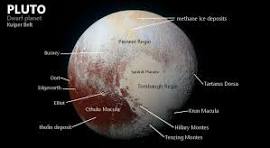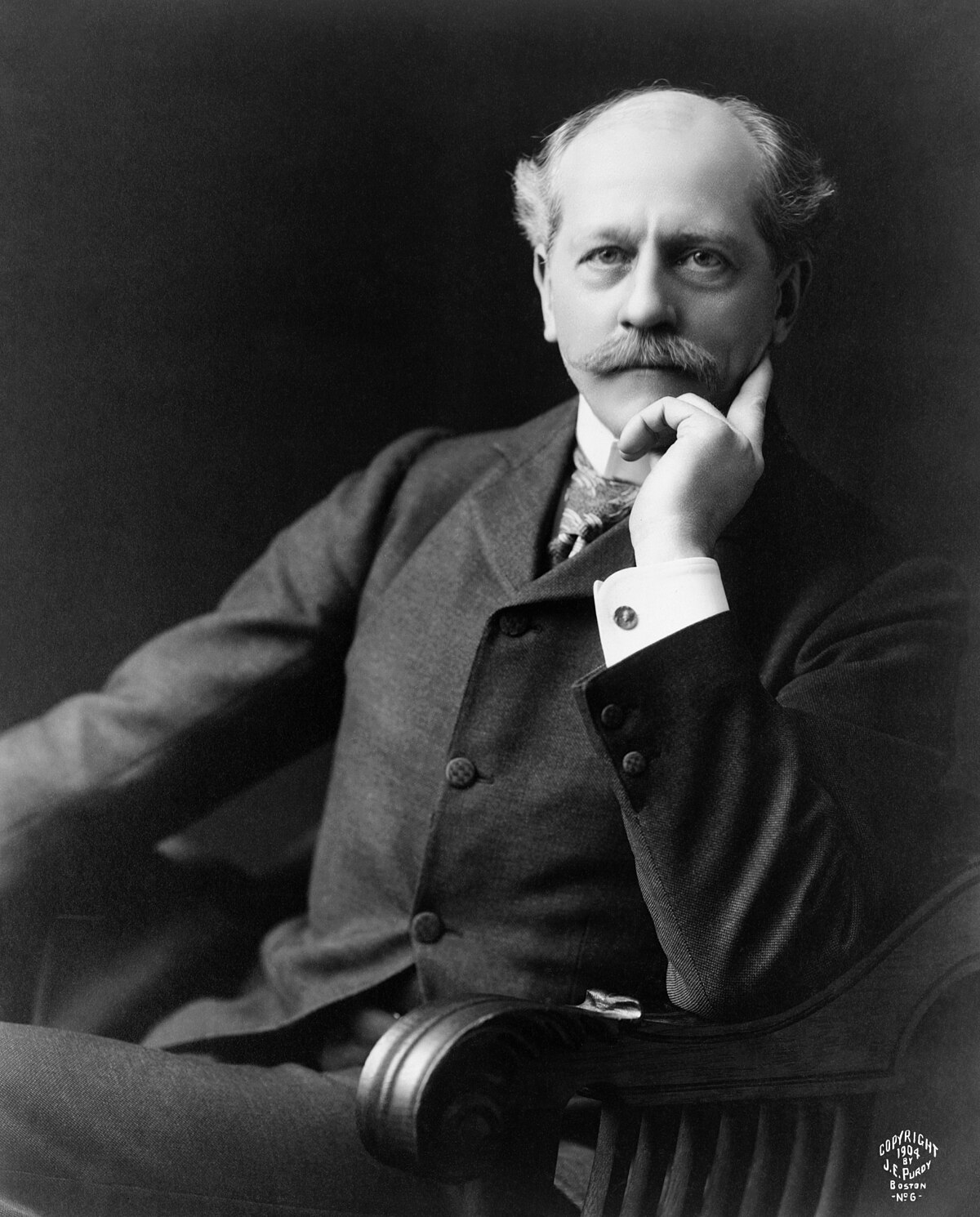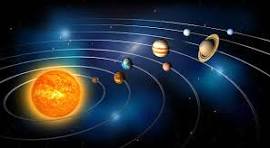
|
Natura vacuum abhorret - Aristatle |

D Vautier
4/2025
Here is the real story about
the asteroid Pluto formerly known as Planet-X.
The IAU (International Astronomical Union) still likes to call it
a minor planet, whereas it is a large asteroid out in the Kuiper belt.
So just how did Pluto ever become a planet in the first place? This
crazy notion persisted for 76 years, probably because the IAU and the
entire astronomical community was too embarrassed to admit the truth.
Even the idea of a minor planet is ridiculous.
Pluto is an asteroid.
 The story started
with Percival Lowell (1855-1916) who had a lot of money along with a tremendous ego
to go with it. He was a
member of the distinguished Lowell family of Massachusetts.
Early in his life Lowell decided to devote himself to literature and
travel, spending much of his time in the Far East. He wrote a few books and
became counselor and
foreign secretary to the Korean Special Mission to the United States.
The story started
with Percival Lowell (1855-1916) who had a lot of money along with a tremendous ego
to go with it. He was a
member of the distinguished Lowell family of Massachusetts.
Early in his life Lowell decided to devote himself to literature and
travel, spending much of his time in the Far East. He wrote a few books and
became counselor and
foreign secretary to the Korean Special Mission to the United States.
 When Lowell was
35 he had this great epiphany to get into astronomy and wanted to become
famous by devoting his fortune, reputation and energy to the study of
Mars. He built an excellent
observatory at Flagstaff, Ariz.
Lowell was somehow taken up by
the theory that intelligent life on a dying Mars had built systems of
“canals” to transport water from the polar ice caps (this “canal” theory
came from a mistranslation of the Italian astronomer Giovanni
Schiaparelli who reported observing a network of dark, linear features
on Mars, which he called "canali", channels, not canals).
Nevertheless, Lowell persisted with his theory of water canals, long
vigorously debated at that time, and becoming a popular subject of
science fiction, e.g. The Martian Chronicles.
When Lowell was
35 he had this great epiphany to get into astronomy and wanted to become
famous by devoting his fortune, reputation and energy to the study of
Mars. He built an excellent
observatory at Flagstaff, Ariz.
Lowell was somehow taken up by
the theory that intelligent life on a dying Mars had built systems of
“canals” to transport water from the polar ice caps (this “canal” theory
came from a mistranslation of the Italian astronomer Giovanni
Schiaparelli who reported observing a network of dark, linear features
on Mars, which he called "canali", channels, not canals).
Nevertheless, Lowell persisted with his theory of water canals, long
vigorously debated at that time, and becoming a popular subject of
science fiction, e.g. The Martian Chronicles.
Lowell then turned his efforts to find Planet-X, the so called Ninth
Planet. He made an elaborate
mathematical study of the orbit of Uranus.
He attributed certain irregularities to the action of an unseen planet
beyond Neptune and calculated its probable position (I have comments
about this below). In 1905 he organized a systematic search for the
planet by the staff of his observatory, and in 1915 he published his
“Memoir on a Trans-Neptunian Planet.”
It is true that the discovery of Neptune was somewhat assisted by
mathematical modeling because of the immense mass of both planets and
because they do lie on the same planetary plane.
The application of Newtonian physics would cause orbital
perturbation but such conditions only occur every 306 years or so.
It takes Uranus approximately 142 Earth years to orbit the Sun, while
Neptune takes about 165 Earth years, meaning Uranus will "catch up" to
Neptune roughly every 306 years.
This is because Neptune has gained 86% of its former orbital
position. Such orbital
perturbations had to be optically well documented in the past since they
only occur every 300 years.
 Despite all this
mathematical modeling, Neptune is easily observable.
I found it by chance when I was 12 years old using my 6 inch
reflector at 100x. But back
in those days telescopes were not very good I suppose.
I didn’t need no stink’in math to find Neptune.
Despite all this
mathematical modeling, Neptune is easily observable.
I found it by chance when I was 12 years old using my 6 inch
reflector at 100x. But back
in those days telescopes were not very good I suppose.
I didn’t need no stink’in math to find Neptune.
In my mind it is virtually impossible that any perturbation in the orbit of Uranus or Neptune could be attributed to this so-called Planet-X. It takes Pluto 248 years to orbit the sun and the orbit is so wild. Sometimes it doesn’t even get close to Neptune. Besides the mass of Neptune is 10,000 times greater than Planet-X, a fly compared to an elephant.
The whole point I'm making
here is that this Lowell guy was engaging in a lot of pseudo-science and
the science community was simply taken in by it all. He conjured
up this Planet-x thing as his path to historical immortality. But
we did however get Ray Bradbury's Martian Chronicles out of it.
In 1916
Percival Lowell
died and in his will he left generous endowments to all of his avid
young researchers at the flagstaff observatory to continue the hunt
for the theoretical and deceptive Planet-X. The enthusiastic staff
continued the search for 14 long years.
They eventually began to study photographs with a new device
called a
blink comparator (com-PAR-a-ter)
to spot differences between two identical photographs of the sky taken
on different nights. The “blinker” permits switching from viewing one
photograph to another, "blinking" back and forth between the two images
that were superimposed and aligned against their stary backgrounds. The
user can more easily identify movement or brightness change. The
“blinker” was invented in 1904 by two German physicists.
 On February 18,
1930, Clyde Tombaugh, an energetic young worker at the Flagstaff
observatory finally discovered Planet-X. This kicked off a wild and
hectic time for the entire staff, as they worked furiously to gather as
much data as possible about the new planet and find a suitable name.
1930 was a hard year and the depression was on, so good news was
high valued stuff, especially with all the fascination behind the
mysterious planet. The
people at
flagstaff
chose the name Pluto after the Roman god of the underworld.
Also, as it happened, Pluto is represented by PL which are the
initials of
Percival Lowell.
On February 18,
1930, Clyde Tombaugh, an energetic young worker at the Flagstaff
observatory finally discovered Planet-X. This kicked off a wild and
hectic time for the entire staff, as they worked furiously to gather as
much data as possible about the new planet and find a suitable name.
1930 was a hard year and the depression was on, so good news was
high valued stuff, especially with all the fascination behind the
mysterious planet. The
people at
flagstaff
chose the name Pluto after the Roman god of the underworld.
Also, as it happened, Pluto is represented by PL which are the
initials of
Percival Lowell.
In all this crazy enthusiasm nobody even wanted to admit that Pluto was simply an asteroid.